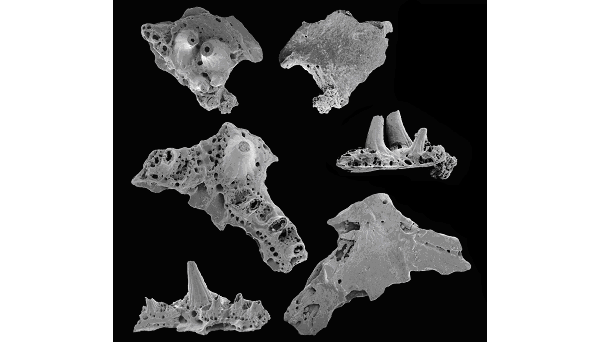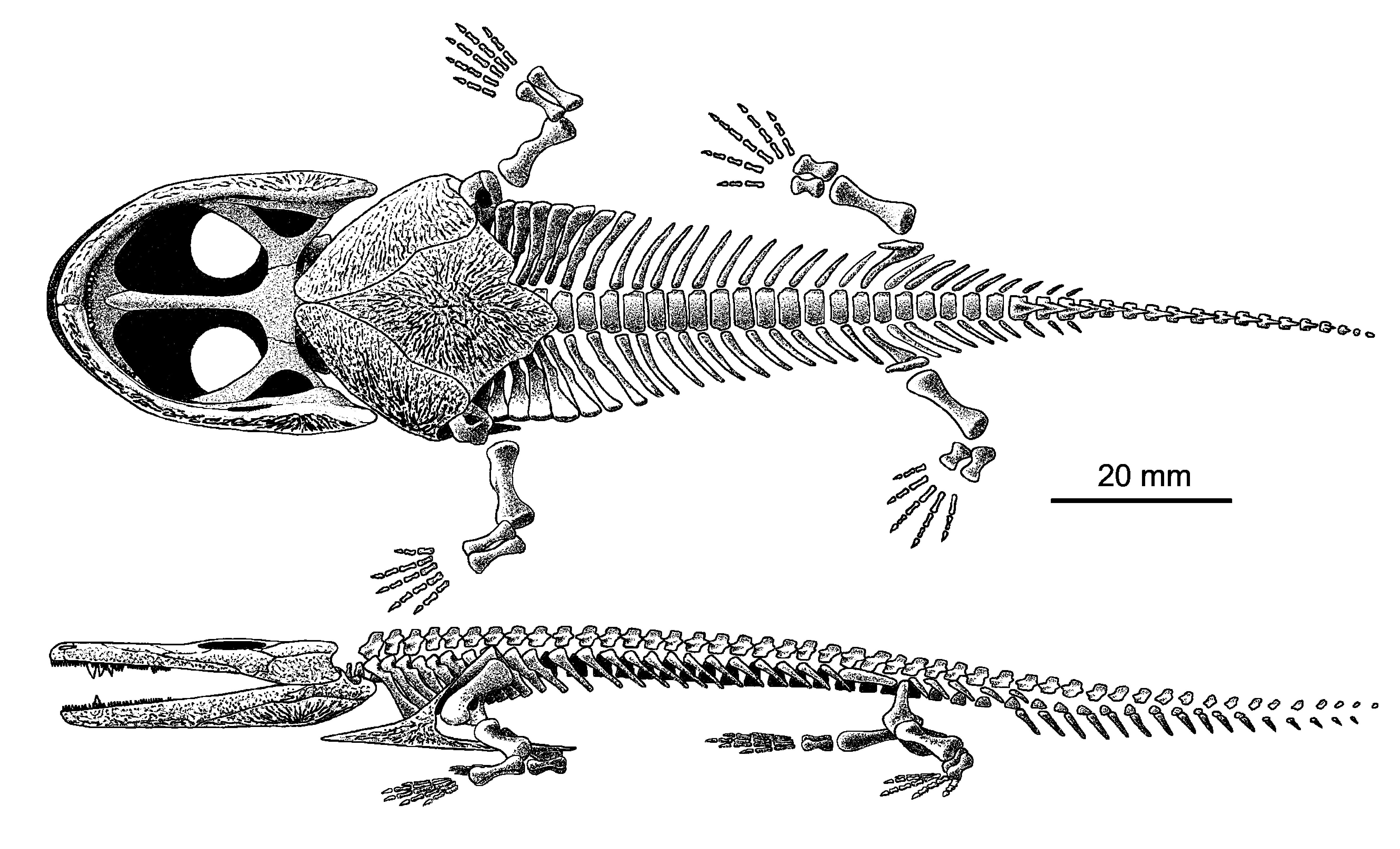<i>Parotosuchus speleus</i> Shishkin & Sulej, 2009
Sugerowana cytacja: Tałanda, M. 2013. Parotosuchus speleus Shishkin & Sulej 2009. Ikonoteka (http://ikonoteka.paleo.pan.pl/xwiki/bin/view/Species/Parotosuchus+speleus)
Diagnoza Adjacent portions of interchoanal and parachoanal palatal tooth rows are nearly aligned instead of forming a right angle, which implies anterior convexity of the interchoanal row, in contrast to straight transverse alignment or gentle concavity of this row in other species. Porównanie The early growth stages and paedomorphic morphotypes known in other capitosauroids show a concave or wedge-shaped interchoanal tooth row forming an acute angle with the parachoanal row. This aspect of P. speleus is apomorphic with respect to dentition patterns known in both the other Parotosuchus species and the more primitive Wetlugasaurus-grade capitosaurids (with adult dentition retaining or approaching the juvenile type). Many characters reflect immaturity of available specimens. The growth series demonstrates a trend towards the standard capitosauroid condition, e.g., the ectopterygoid dentition combining a tusk pair with reduced number of regular teeth instead of a long row of regular teeth in other species of Parotosuchus, the presence of the medial wall on the ectopterygoid and the dorsally exposed facies maxillo-jugalis. Immaturity is substantiated by analogy with Paleozoic larval or paedomorphic forms, e.g., the vomer with step-like demarcation between dentiferous division and medial plate. Autekologia Carnivorous, probably semiaquatic. Występowanie geograficzne Only locus typicus. Zasięg czasowy Only stratum typicum. Materiały muzealne Institute of Paleobiology PAN, Warsaw (ZPAL) Literatura Shishkin, M.A. & Sulej, T. 2009. The Early Triassic temnospondyls of the Czatkowice 1 tetrapod assemblage. Palaeontologia Polonica 65, 31–77. |
|





